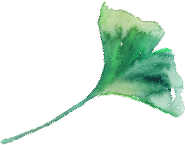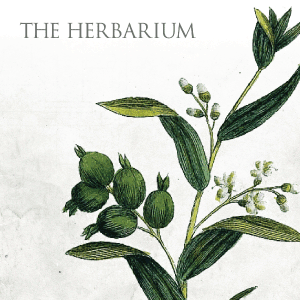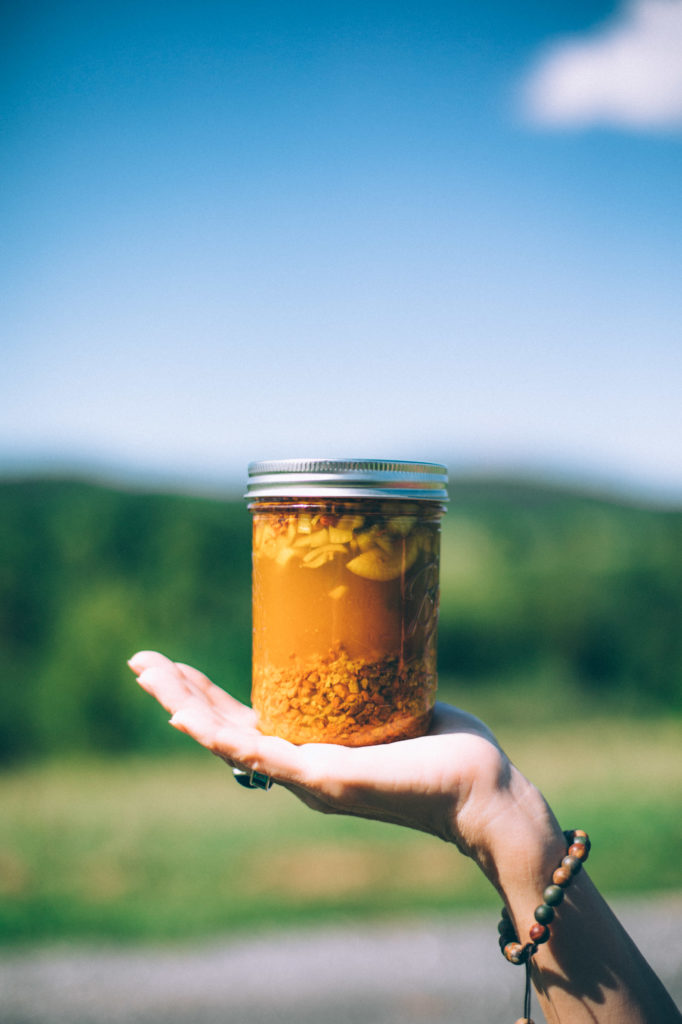
Every herbalist has a little book of recipes. A treasured little notebook to squirrel away recipes from their very first formulating days. Mine has a recipe for fire cider from Rosemary Gladstar when she came to teach my herbal class for a weekend, ten years ago. It was one of the first herbal kitchen remedies I ever made (and with the master, too!). It’s a super simple, herbal immune tonic to support the whole body during times of illness, most often utilized in early fall and winter during colder seasonal transitions. There are SO very many variations of this recipe, and each herbalist has their own special twist on this classic recipe. Today, I’ve formulated my foundational recipe, and I often add several other things to this base recipe depending on what’s available, or what my body may need specifically during that month or season.
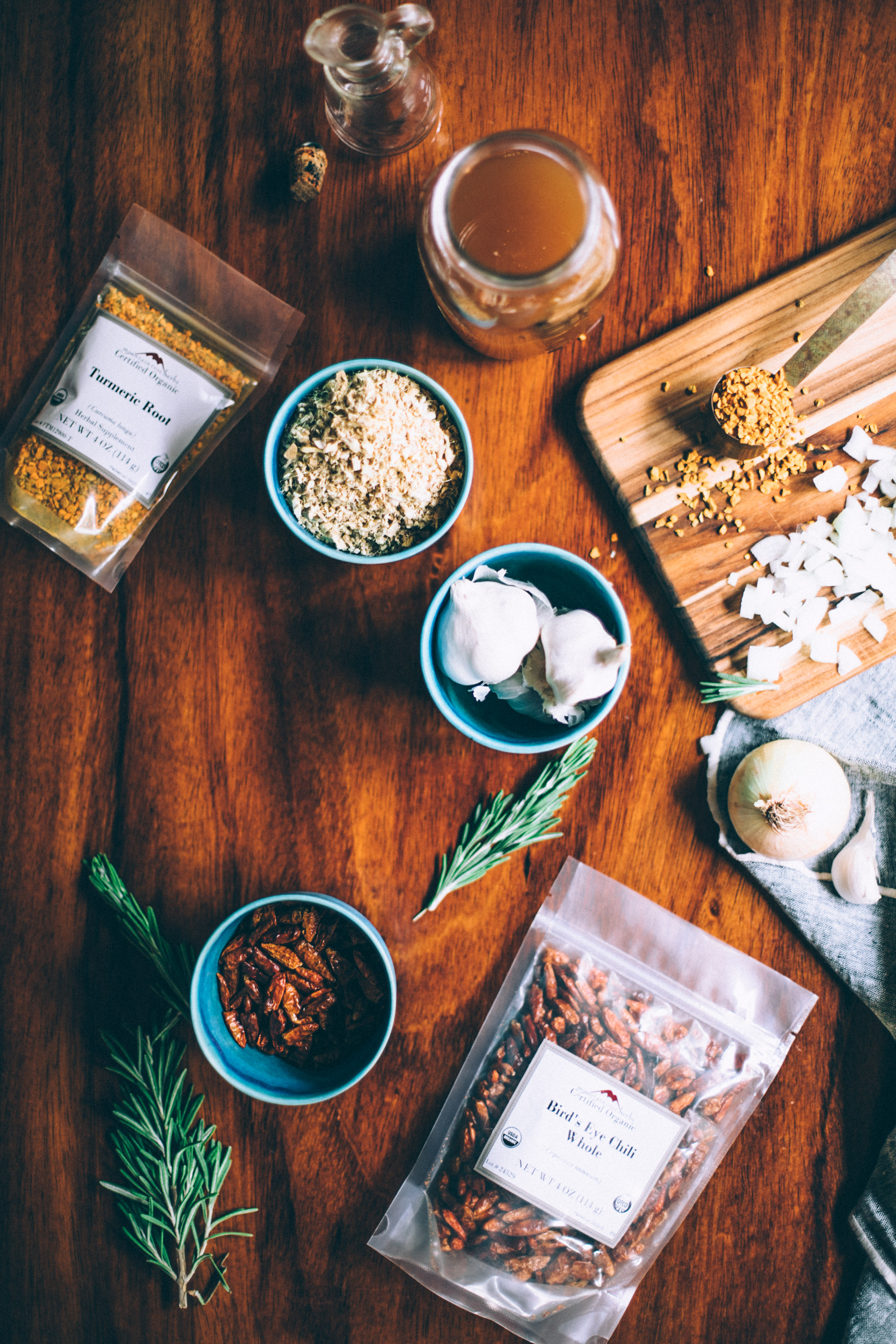
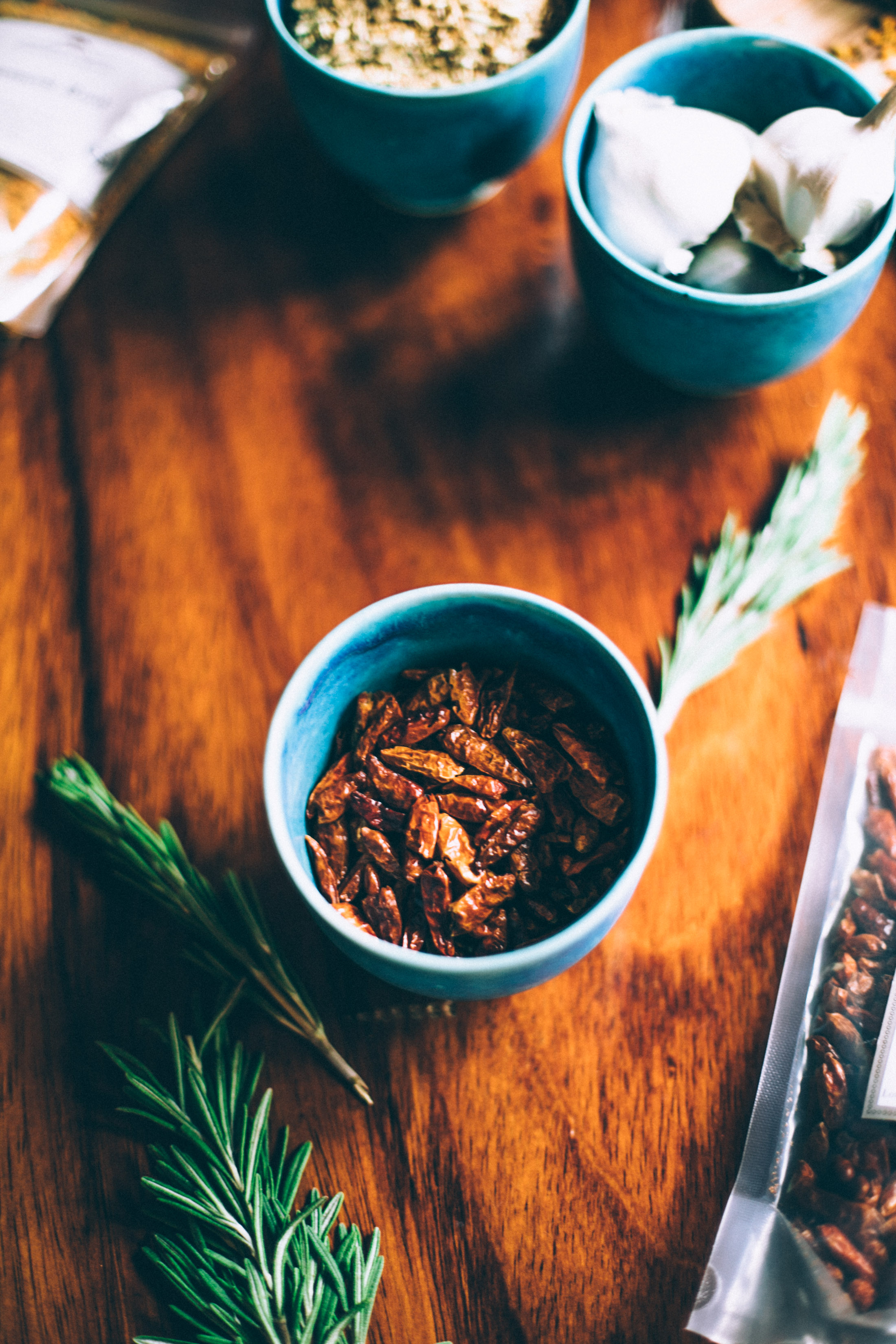
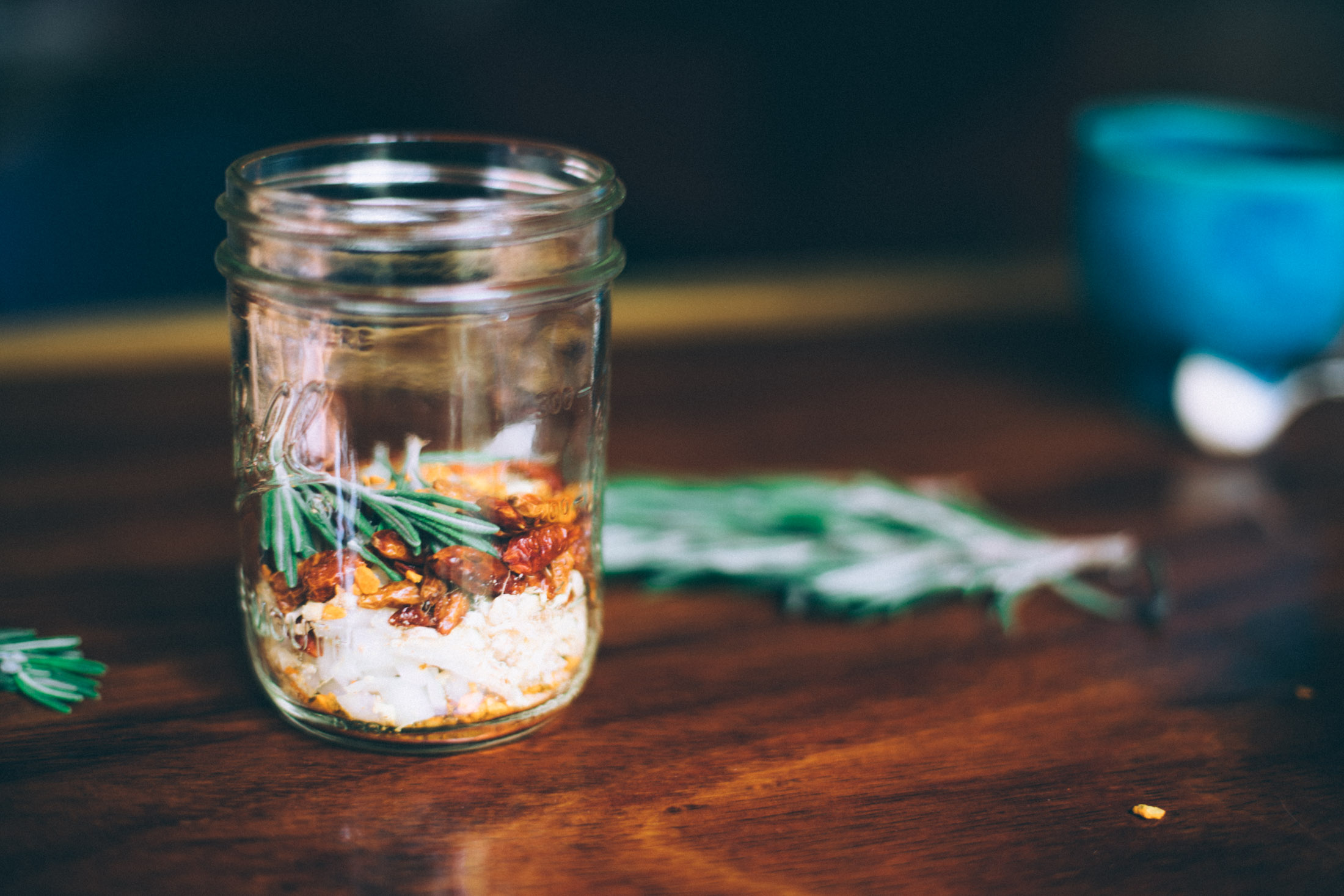
How to Make a Flaming Cider (AKA “Fire Cider”)
This Flaming Cider Elixir – AKA “Fire Cider” – is the simplest foundational formula that you can add anything to and create a bangin’ delicious elixir. Very rarely do I ever measure what I’m putting into fire cider (but I did this time!). It’s extremely forgiving, and can be made more mild, or could pack powerful chili punch with a heavier hand on the chili peppers. I use Birds Eye Chili’s from Mountain Rose Herbs in my fire cider these days to give it a delicious flavor, and infuse a potent spicy hot kick to my cider. I also incorporate ginger root, turmeric root, fresh garlic, onion, rosemary leaves and peppers to make up my base formula. These warming, stimulating and potent herbal additions make for an elixir that will get your blood moving, and the heat from these herbs serves to push pathogens and heat to the surface of the body. The key to this apple cider vinegar tonic is *movement*, using herbs to stimulating and circulate movement through the immune system, lymphatic system, cardiovascular system, and digestive system.
You can add so much more to your flaming elixir. Horseradish is a popular addition, and I use this when it’s available at my local farmers marker. I also like to add in thyme for it’s anti-microbial properties, and peppercorns for an added savory-spicy flavor. If you really like a kick to your fire cider, you can add just a *pinch* of cayenne powder.
Read More: Crafting Your Own Fire Cider
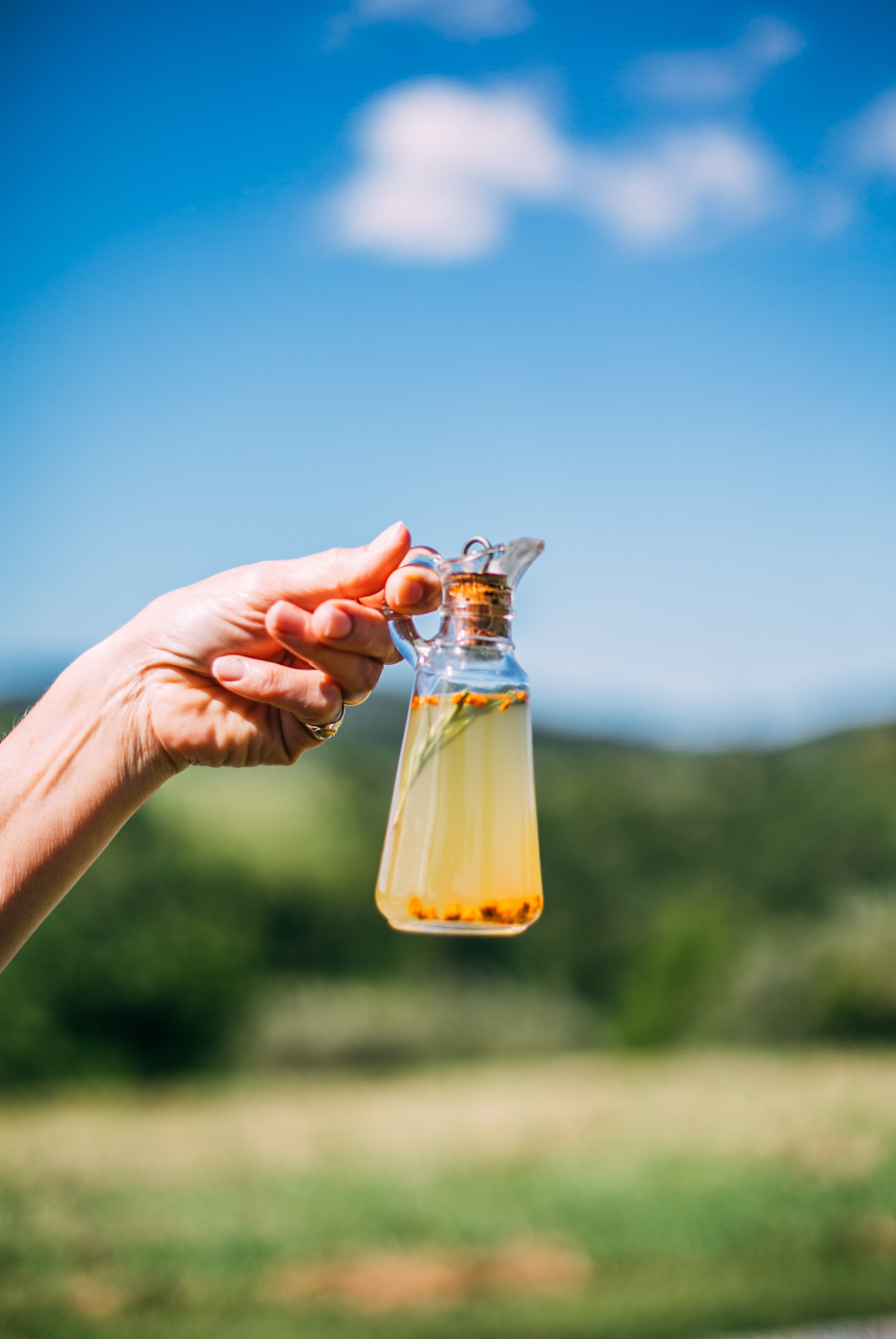
Extra notes on vinegar infusions
When you’re infusing a vinegar (or oil), it’s ideal to really finely chop (or even powder) the herbs so as much surface area is exposed as possible for maximum infusion. However, the smaller you chop your herbs, the harder they are to strain out when the time comes. I generally chop things fairly fine, but not too fine that they would slip through cheese cloth or a fine mesh strainer. It’s totally fine to consume bits of the herbs in the cider! Finally, vinegar can be hard to take straight, thus the addition of the honey in this formula (but it’s optional to add). The sweet flavor cuts the tart flavor of the vinegar, however if you choose to forgo the honey, I would recommend diluting the fire cider in a little water before consuming. It’s strong!
This recipe makes a small batch, so double or triple the recipe as you need. You can also add this flaming elixir to salad dressings, dash a bit on your eggs in the morning, or put a splash into your cocktails or water spritzers!
